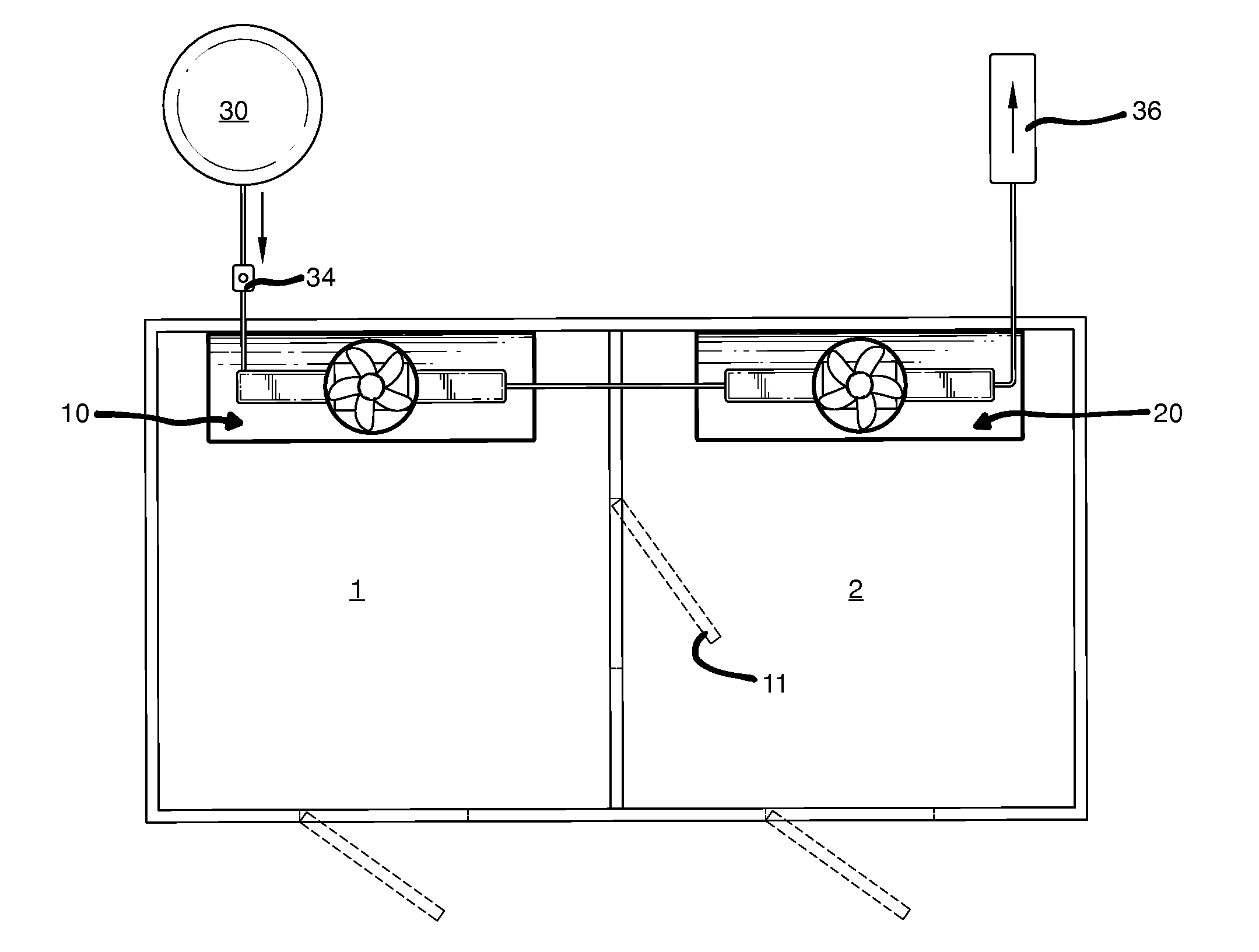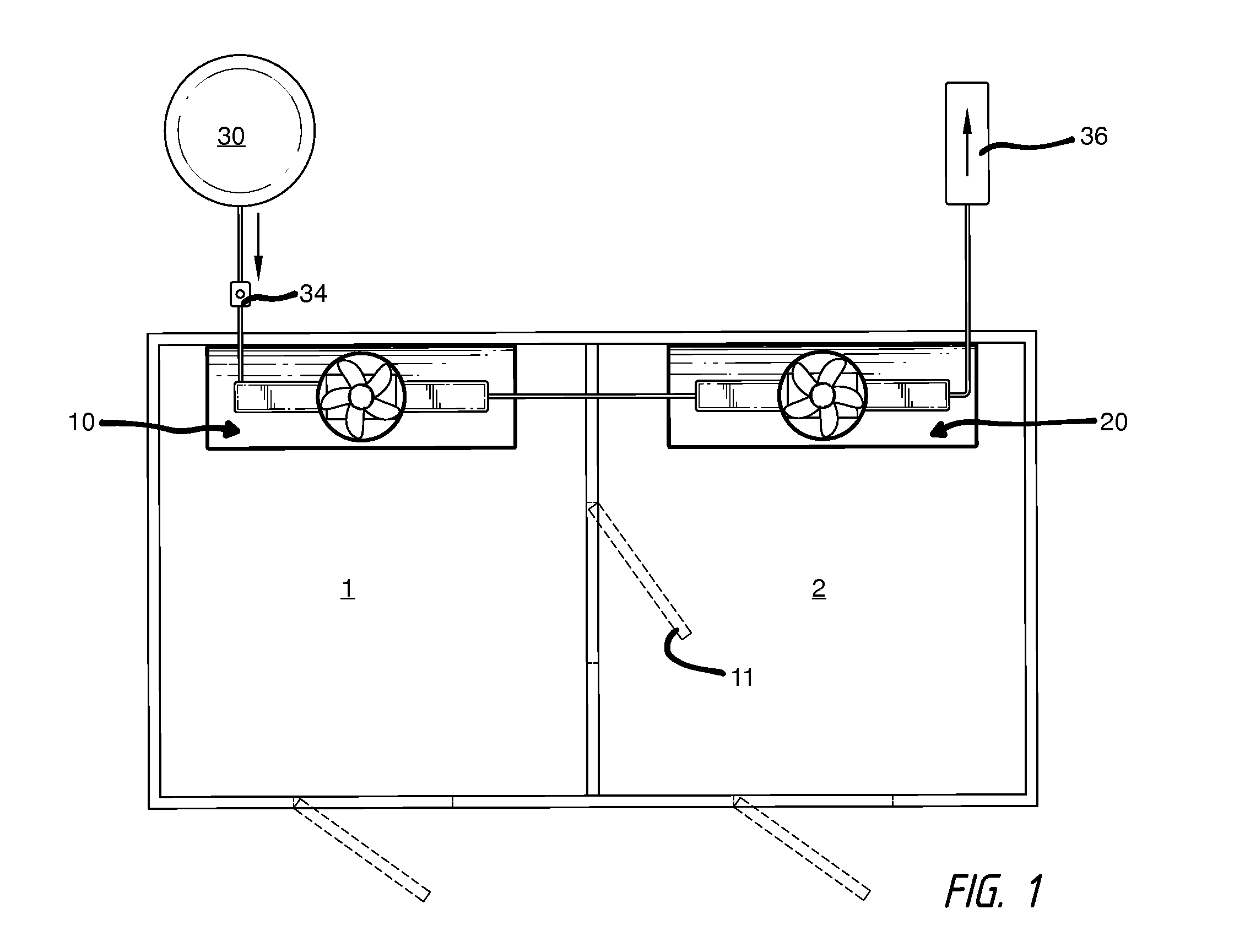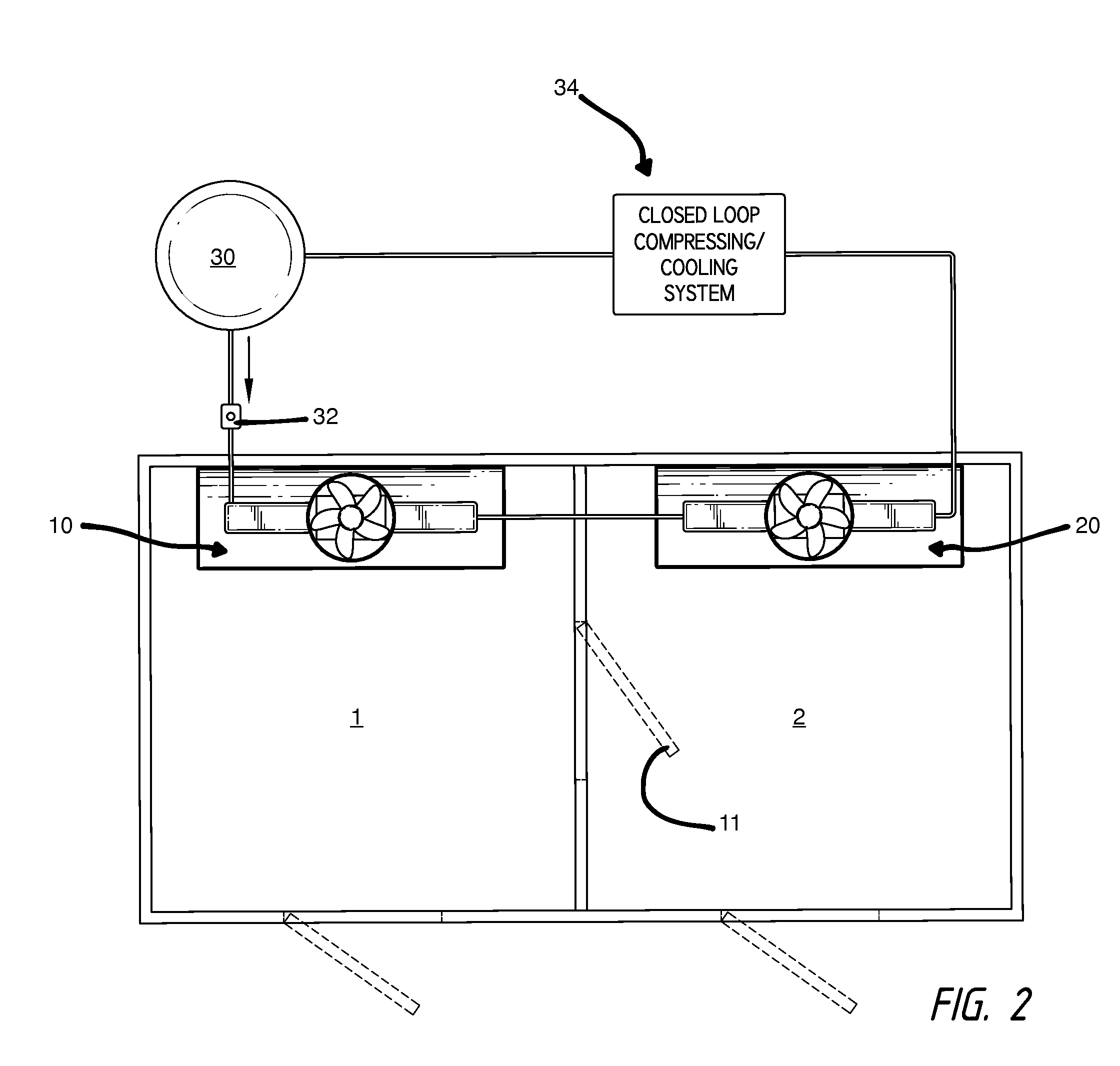Method and Apparatus for Uniform Total Body Cryotherapy
a total body and cryotherapy technology, applied in the field of uniform total body cryotherapy, can solve the problems of affecting the treatment process, affecting the treatment effect, and unable to accurately and efficiently apply cryotherapy to more than one region of the body at a time, so as to facilitate the cryotherapy treatment process.
- Summary
- Abstract
- Description
- Claims
- Application Information
AI Technical Summary
Benefits of technology
Problems solved by technology
Method used
Image
Examples
Embodiment Construction
[0031]Illustrative embodiments of the invention are described below. The showings are for purposes of illustrating preferred embodiments and not for purposes of limiting the same. The following explanation provides specific details for a thorough understanding of an enabling description for these embodiments. One skilled in the art will understand that the invention may be practiced without such details.
[0032]FIG. 1 is an overhead schematic depicting an first exemplary cryochamber utilizing the method and apparatus of the present disclosure. The exemplary embodiment illustrated therein depicts a cryochamber comprising at least two subchambers. A primary chamber 1 and a secondary chamber 2 are interconnected and separated by an access door 11 which remains closed during normal operation. This embodiment further comprises at least two cooling apparatuses, a first apparatus 10 located in the primary chamber 1 and a second apparatus 20 located in the secondary chamber 2. However, in var...
PUM
 Login to View More
Login to View More Abstract
Description
Claims
Application Information
 Login to View More
Login to View More - R&D
- Intellectual Property
- Life Sciences
- Materials
- Tech Scout
- Unparalleled Data Quality
- Higher Quality Content
- 60% Fewer Hallucinations
Browse by: Latest US Patents, China's latest patents, Technical Efficacy Thesaurus, Application Domain, Technology Topic, Popular Technical Reports.
© 2025 PatSnap. All rights reserved.Legal|Privacy policy|Modern Slavery Act Transparency Statement|Sitemap|About US| Contact US: help@patsnap.com



